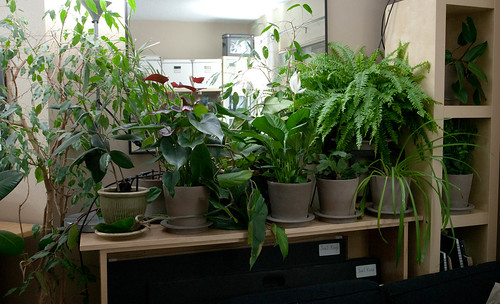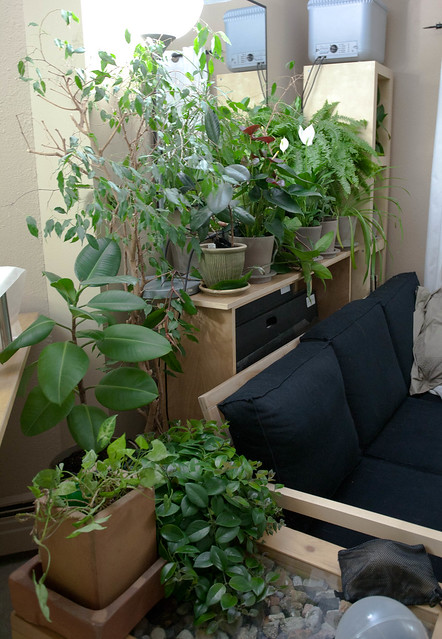I’ve been listening to an audiobook of 168 hours and I have to say it is my current favourite of the genre. It has led me to ponder some misconceptions I’ve had about work, work/life balance, passion, etc. (I also have realized that organization and time management and self-help (of the practical and science-based kind) are another hobby of mine. Hence the categorization of this post. Optimization and studying systems . . .)
Anyway, I discovered that I’ve misunderstood two aphorisms: One, that you should follow your dreams (a.k.a. do what you love). Two, that happiness and satisfaction and passion are key to being good at what you do.
First, on following your dreams. Misunderstanding this is not totally my fault. The way it is presented is usually: Quit school and start a crafting business! Move to New York to become a writer! Enrol in acting classes! Lock yourself in your garret to paint! Identify what your dream is and then drop everything (including practical considerations of money, location, and time) to follow it in the most obvious instantiation.
So I knew I wanted to be a writer, but I didn’t particularly want to move to New York. Or quit school, for that matter. Or even spend every free moment writing. I happen to love learning and want to spend time on that, too. This led me to conclude that I wasn’t really dreaming of being a writer. There was no dream to follow because if I really wanted it, writing a novel (and getting it published) would be a consuming passion. Thus a more prosaic career path was my calling, and I’m all for people following their dreams if they want but I really hate not having money to pay the bills so that’s not for me.
Now, the other side: passion, finding your core competencies and what makes you excited. This misunderstanding is almost entirely down to my own peculiar (but not unique) tendency to downplay happiness. I conflated this with “Bloom where you’re planted” and twisted it into a stick, a demand to muster up passion for whatever I’m doing or else. In order to be good I had to be passionate and excited. A rather serious misordering: “you need to be passionate about what you are choosing to do.”
This, combined with twisted ideas about what I was allowed to be passionate about, turned disastrous and nearly drove me out of work I adore. Because surely being a researcher meant always thinking only about the topic you were researching, not this more general desire to Learn! All! The Things! (and then connect them). And definitely being a researcher was about successful discovery, not clear communication. Real (computer science) researchers were passionate about proofs, or programs, or scribblings on the whiteboard or maybe even hardware design. Not crafting sentences, not absorbing ideas (at least not without immediately turning them to work for your own ideas). And so on. I don’t think I could possibly uncover all the strange gotchas in my head that meant what I loved and was doing and feeling Didn’t Count. You can blame some on poor teaching or a restrictive “Protestant work ethic’’ or the disconnects in society about success and happiness. But the end result was that I would hear “passion leads to quality” as a criticism of my obsessions rather than a pointer for what to pursue. And it would mix with the “if-I-really-loved-this-I’d-love-only-this” interpretation of “follow your dreams” and it would all mean I was judged and found wanting.
Both of these skews miss the point that the key thing for making decisions is finding out the trivial and vague and recurring things you love. Not your dream in some epic sense (I am but the mistress of my muse) or in the sense of finding the right career label (I was born/called to be a Teacher) but in the sense of “Hey, I like reading. I am enjoying this. I like petting this cat, too. Isn’t the sun lovely?”
I can find some broad categories that I love (and am good at), but I get to them from looking at the specific things I enjoy, not decreeing that I-Am-Researcher-This-I-Love. I know that I love looking into (some) things, whether it’s what fibre to use for hypoallergenic wicking socks or the underlying causes of schizophrenia. I love experimenting (sometimes), whether with new craft materials or new update functions for my learning agent—both different cases of trying something out and seeing what happens. I love inventing things, from the helpful (I hope my knowledge representation research is promising for artificial intelligence) to the ridiculous (I tried to design a sock knitting machine but gave up because sourcing the parts was going to be a pain). I really like trying to explain things to people and understand other points of view. I like trying new things and I love creating things with my hands. Tiny things, especially. But not everything. I hate sewing, although sheet metal work is awesome.
None of these counted in “follow your dreams” or “be passionate about what you do” edicts because they weren’t real career-type things. They are not on anybody’s criteria for career inventories. But they keep coming up in my life, and I keep coming back to them. Sure, these could roughly fall under “researcher” when I target the general statement. But if I focus on the role, I try to shoe-horn myself into my preconceived ideas about what a researcher should be, rather than bending the role to my many loves.
So it turns out that paying attention to what I’m enjoying NOW, in this moment, might be extraordinarily more important than what career I feel a strong affinity for or which program is most appealing. Why is this a strange thought to me? I’ve spent decades pondering career choices, and I’m thinking that time would have been better spent exploring and enjoying(although it was inevitable that I was doing that all along as well, to give myself *some* credit). The career guidance surveys that suggested poultry veterinarian, concrete sculptor, dentist all seem irrelevant now. This is what I’m really doing: grad school, AI research, writing, developing a home-based business, selling tiny things. There’s an odd man out there. But they’re what I love.
Life is strange.













